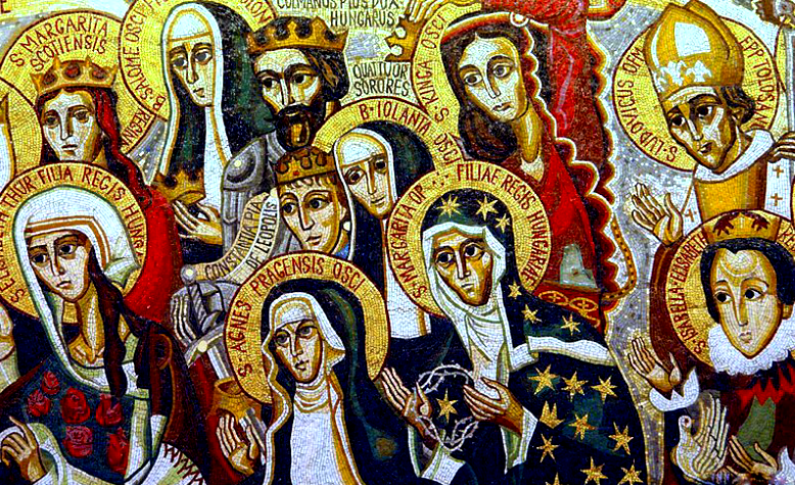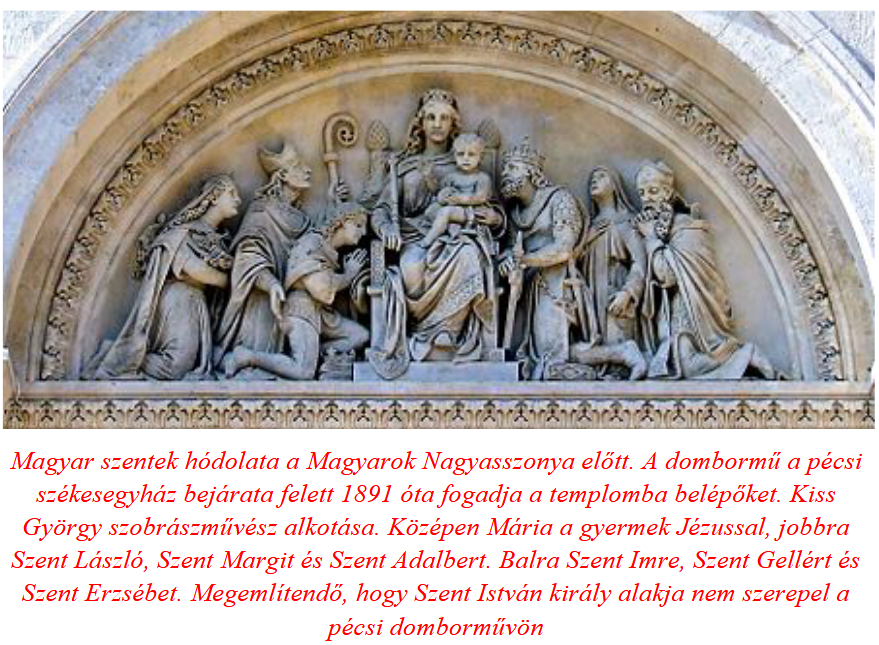
A nation that does not know its past does not understand its present, and cannot create its future!"
Europe needs Hungary ... which has never allowed itself to be defeated.
Saint Imre (1000/1007 – 1031)
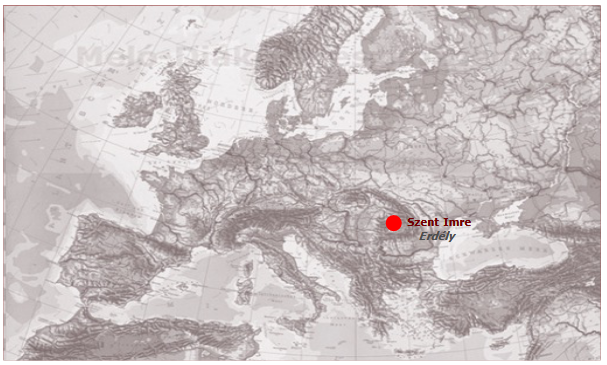
The question arises, how does Prince St. Imre ? It is not her virginal life, nor her origin from the Árpád family, nor the good name of the Árpád family, but the role of the Hungarian saints in Europe that comes to the fore. Be it male or female saints. Because of his pioneering personality, let us mention the radiance of the young prince's short life. Here, we are not talking about his parents, teachers, the court environment, or the circumstances of his death. We are referring to a phenomenon that, although it causes controversy, the fact that historians, linguists, religious scholars, and painters have been dealing with it for a hundred years is proof that the assumption has a basis.
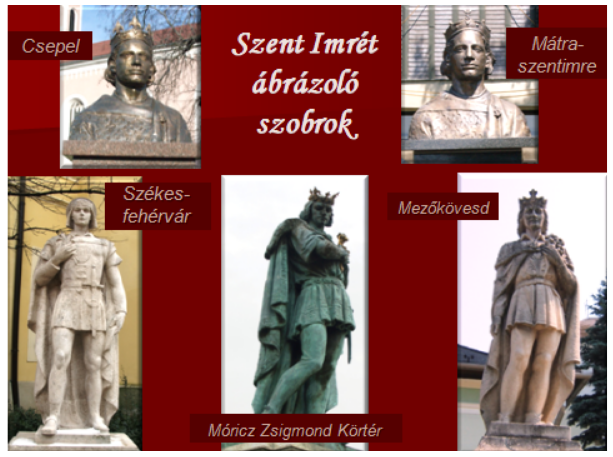 The evidence - which describes the history of the Hungarian saint's fame and popularity in much more detail - was formulated based on the research of Professor Sándor Balogh, Almost everyone knows that America was named after Amerigo Vespucci It was he who realized that this continent was not India, but that it was a “new world”. However, this name did not fit a piece of land. Therefore, in 1507, Martin Waldseemüller Originally, the name only applied to South America, but in 1538 the geographer Gerard Mercator
The evidence - which describes the history of the Hungarian saint's fame and popularity in much more detail - was formulated based on the research of Professor Sándor Balogh, Almost everyone knows that America was named after Amerigo Vespucci It was he who realized that this continent was not India, but that it was a “new world”. However, this name did not fit a piece of land. Therefore, in 1507, Martin Waldseemüller Originally, the name only applied to South America, but in 1538 the geographer Gerard Mercator
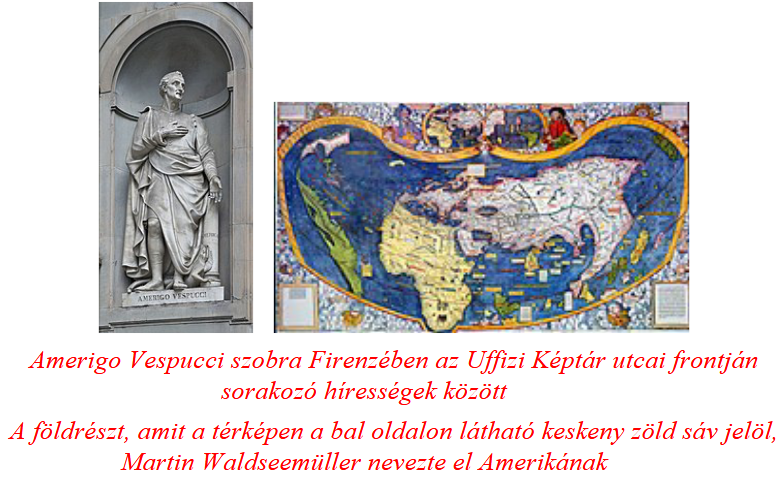
However, fewer people know where and from whom the Florentine geographer's name comes from. In short, many members of the Vespucci family were named after the Hungarian Saint Imre. (Imre – Emericus – Amerigo). At first glance, this could be considered a play on words, but the researchers dealing with the topic dug deeper than that.
Archbishop John Noll , bishop of the Diocese of Fort Wayne, wrote in 1931: St. Imre's popularity grew among the youth of Europe at the time, and he
became the patron saint of Europe's youth under the name Sanctus Emericus (Americus).
When Amerigo Vespucci was born, his lawyer father, a Florentine nobleman, deliberately chose Saint Imré as the heavenly patron of his third son. In the Italian version, he therefore called it Amerigo.
Dr. Howard V. Harper raises the question again and then answers it: At that time, many Italian parents named their sons after the 11th-century Hungarian, Szent Imre. Imre in Latin is Emericus, the Italian form of which is Amerigo. Amerigo Vespucci's father and grandfather were both Amerigo, Amerigho et Matteo di ser Nastagio di ser Amerigho Vespucci." So it was not only used by "our Amerigo", but also by his grandfather, and not only according to the baptismal certificate, but this name is also on his grandfather's tombstone!
In his 1968 study "America bears the name of a Hungarian king", parish priest
György Papp in the image of the three-part high altar of the Mensola church in Settignano, near , St. Guiliano /Juliánus/ and St. Amerigho /Imre/ stand next to Virgin Mary The image holding a lily in his hand depicts Saint Imré of Hungary, which can also be read in the text below the image: ...Sco Amerigho D'Unghera MCCCXXXXI ottobre. (It should be noted that the altarpiece was also commissioned by Amerigo, who painted his own patron saint. This also indicates the frequency and popularity of the name. In the middle work, the client, Amerigo Zati, is kneeling in front of Saint Julian . )
Five smaller paintings can be seen below the large altarpiece. The second picture from the right depicts the case taken from the legend, when Saint István watches from the door as his son Imre and his wife Gizella kneel and pray.
 This also shows that it was not the altarpiece that caused the name Amerigo to spread, but regardless, the name had already been used before and they knew who
This also shows that it was not the altarpiece that caused the name Amerigo to spread, but regardless, the name had already been used before and they knew who
St. Imre was. At least in and around Florence, which explains the history of the subject of the altarpiece.
Saint Margaret of Scotland (1046-1093)

The nearly thousand-year-old story dates back to the founding of the Christian Hungarian state.
One of the Árpád house certificates indicates that the "land of the British" was on the border of today's Mecseknádasd. The Árpád era chapel visible next to the main road was perhaps built in this area. (There is a legend attached to the chapel in the cemetery, according to which St. Imre did not die in the Bihar forest, but here, in this place, in 1031.)
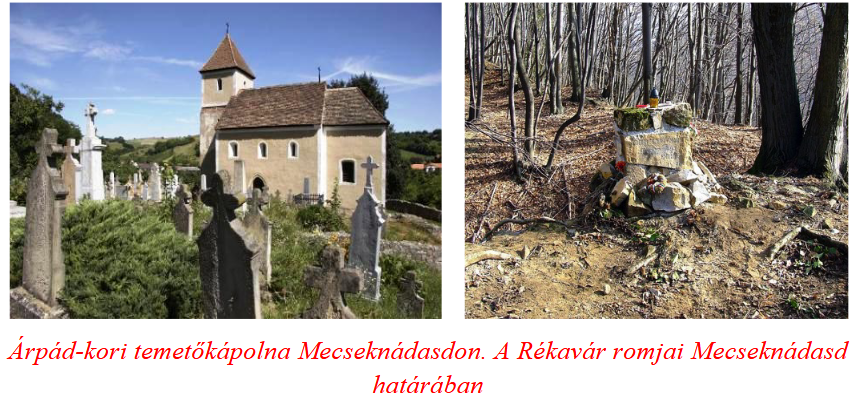
the St. George Church , you can see a painting St. Margaret of Scotland . The legitimate question arises, how does a saint from Scotland end up in this landscape?

In 1016, the Danes deposed the king of the Britons, Edmund the Ironbeard , who lost his life in the decisive battle. Her minor sons - Edmund and Edward - were evacuated from the island nation, but they did not find refuge either in their mother's Swedish court, in Kiev, or in Krakow. The Hungarian king Szent István welcomed them - like so many other fleeing European heirs to the throne - to Esztergom. The king designated an estate for the princes at the foot of the Mecsek, where they could live a life befitting their rank. One son died early, the other—perhaps Edmund? - married István's grandson, according to other assumptions, his daughter Ágota . Their place of residence could be Nádasd or Rékavára near the settlement. The royal couple's three children were born here: Margit, Krisztina and Edgár . The children received the strict but just and useful education of the Benedictine order (ora et labore), in the spirit of "pray and work", which was later applied in England. Their father, Edmund, who had been banished earlier, was called back to the island country in 1057, where he took his children with him. At that time, Margit was already twelve years old, an intelligent and beautiful creature. The head of the family died in unclear circumstances after landing. However, the children made it to the English royal court. , Malcolm "Bloody Hand" was there the heir to the Scottish throne, who fought with the Macbeth . Macbeth fell in the decisive battle in 1057.
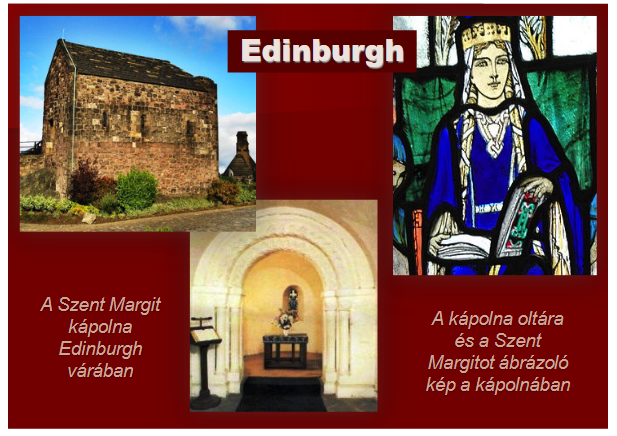
Malcolm, seeing and then getting to know Margit, asked for her hand in marriage. The inexperienced young girl said yes only with her mother's encouragement. This marriage, which was concluded in 1069, created for Margit the first important religious task.
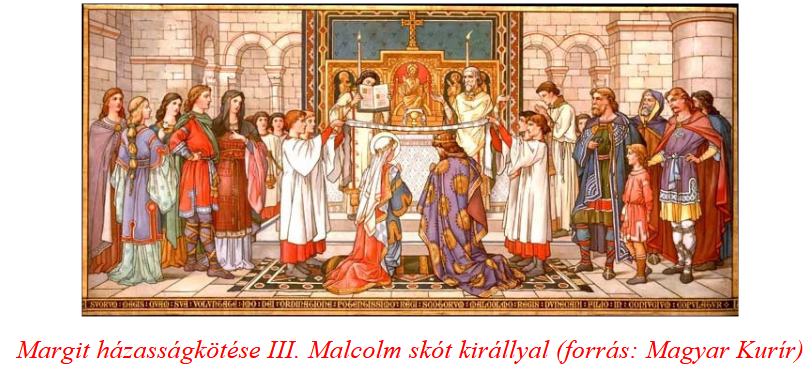
As queen, Margit was able to have a say in the affairs of the court, the family, the country, but above all her husband. He managed to partially change the harsh Scottish customs and bloody showdowns. He also got the Church of Scotland to hold its first council. Among other things, laws were passed - thanks to Margit's effective intercession - that taught those around her and the entire nation about peace, the teachings of Jesus, and the important role of the family. He introduced Scotland to the foundations of the Roman Catholic liturgy, the roots of which go back to the peaceful world of the Mecsek.
Margit also took part in sharp theological debates.
The essence of these was the introduction of forgiveness of sins into the practice of the Scottish Church. what she learned from the Benedictines, Margit proved the words of the Holy Scriptures, according to which everyone commits a sin, but if he sincerely regrets it, then he should not be condemned, but forgiven.
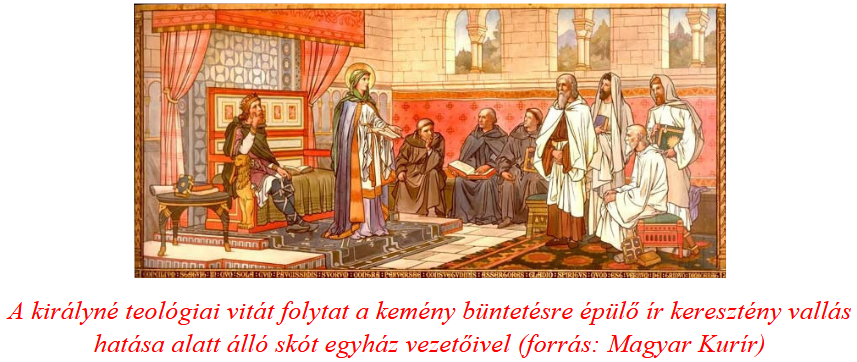
The queen's plans were followed.
Churches, monasteries, and schools rose all over the country. He helped the suffering and the hungry, and thus set an example for his environment and the Scottish people.
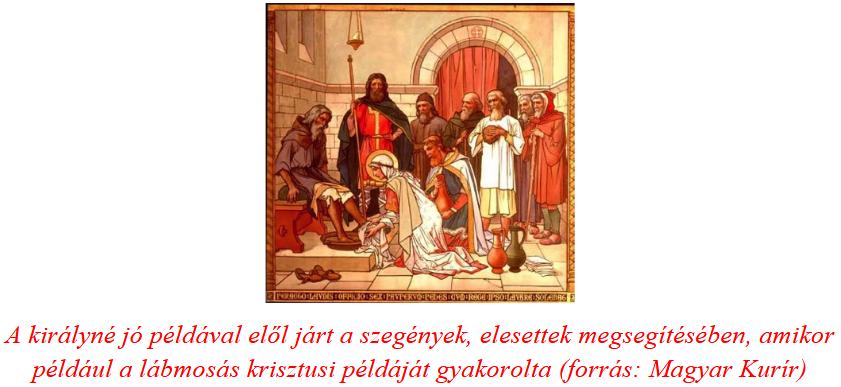
Margit gave birth to eight children in her marriage, six boys and two girls. By marrying Matilda, to Henry I - William the Conqueror

The queen passed away on November 16, 1093, at the age of 47.
Her husband, Malcolm, and her eldest son had been killed in battle a few days earlier. They were buried a few kilometers from Edinburgh, in the Benedictine monastery of the Holy Trinity, founded by Malcolm.
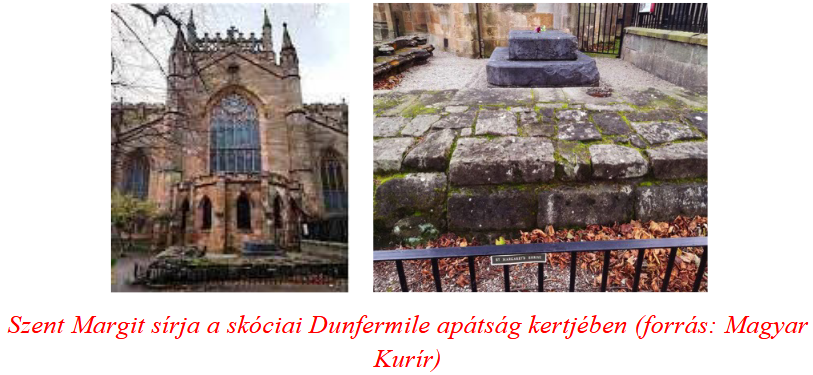
Margit was venerated as a saint shortly after her death, and in 1261 IV. Pope Ince officially consecrated him as a saint in a ceremonial setting. Due to the bloody and destructive events of the English Reformation, the remains of the Catholic Queen and King Malcolm were taken to Spain and buried in the Escorial. Later, when possible, their ashes were brought back to Scottish soil. Margaret was made the patron saint of Scotland in 1669. Three hundred years later, in 1969, Margaret's holiday was moved from June 10 to November 16, the day of her death.
Saint Piroska of Árpád-házi (1088-1134)
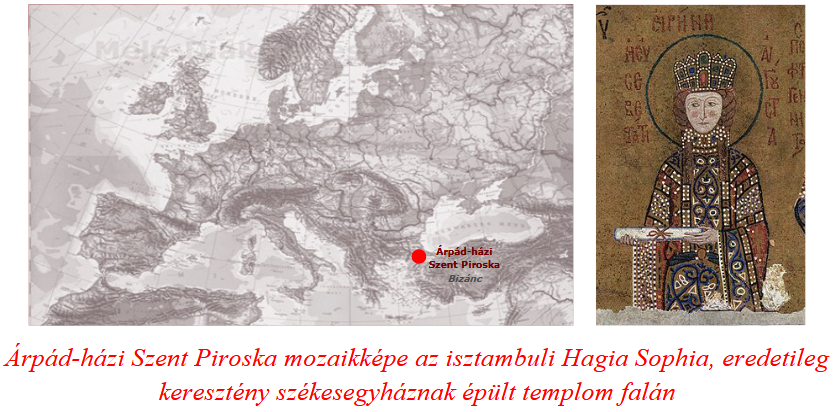
King László (1077-1095) married twice. We don't know anything about his first wife, maybe only that she was the daughter of a Hungarian lord, whose name we don't even know. However, we can assume that, unlike his predecessors - from St. István to Béla I - he chose a Hungarian wife, thereby indicating his alignment with the ancient customs. A daughter was born from this marriage, whose name we also do not know. However, we do know that Prince Yaroslav .
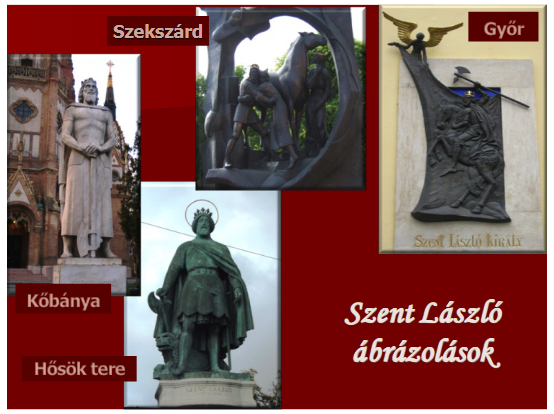
The Hungarian king married again, but this time political interests also played a role in his choice.
This, of course, coincided with the interests of the Kingdom of Hungary, since King László found himself in a very difficult situation, taking into account both Hungarian and European conditions. When he ascended the throne, the papacy and the emperor were fighting for power in Europe, in 1077, for example, the Canossa district took place. Chaos reigned in domestic politics as well. László had to reckon with Salamon's attacks, economic difficulties, partisan lords, vagrants who threatened the internal security of the country, the Kuns and Beshenys who constantly attacked the eastern and southern borders. In this situation, he chose Adelheid from Rheinfelden . In the German civil strife IV. In 1079 László married the daughter of Rudolf of Rheinfeldi, a Swabian who fought against Emperor Henry

Piroska was born in 1088 , who was the only child of the royal couple.
The most famous image of the Árpád princess is a mosaic on the wall of the once Christian cathedral Hagia Sophia in Byzantium. (One of the main churches of Christianity Erdoğan , so the mosaic image will be closed to Christians and tourists in the future. Islam does not tolerate the depiction of portraits. It was already a result that the mosaic was not knocked down, only covered up.)
The golden mosaic depicts Empress Eirene In the middle is the Virgin Mary with the baby Jesus in her hands, and on the left is II. Emperor John Komnenos is shown presenting a donation to Mary, the personification of Divine Wisdom. Saint László's daughter Piroska became the most respected empress of the Byzantine Empire. Piroska came to the city of Mária from Hungary, the country of Mária. After his father's death, he lived for a while Kálmán Könyves , then he came to the Golden City at the invitation of the Byzantine heir to the throne.
In Byzantium, she married the Byzantine emperor in 1105. János was able to occupy the imperial throne in 1118.
The empress took the name Eirene, (Peace), to which Piroska served with her whole being. Eight children were born from the marriage of the imperial couple. Among them Manuel , who was the greatest emperor of the Byzantine Empire, should be singled out. Szent László was therefore not only one of the most important Hungarian rulers - the Táltos king - but also the grandfather of the outstanding emperor of the Eastern great power. In addition to taking care of Eirene's children, she founded a church complex in 1130, which included three houses of God, two monasteries, a hospital, a nursing home, an orphanage and a shelter for the disabled. This Pantokrat monastery was the perfect expression of Piroska's will and mission to help people. Among other things, this also explains why Eirene was canonized and why she was a popular and much-loved person.
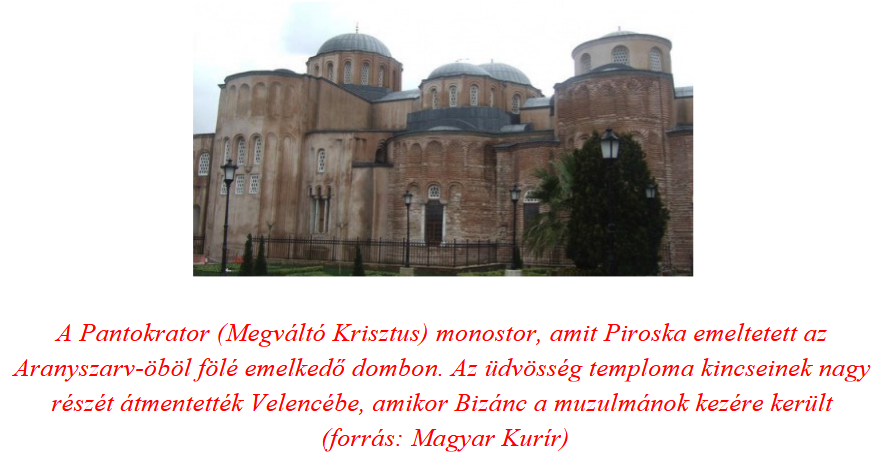 When the saintly empress entered the monastic order of the monastery, she took the name
When the saintly empress entered the monastic order of the monastery, she took the name
Xéné (Foreigner) With this, he expressed that even the believing Christians, including himself, are strangers on this earth, and long to return to the kingdom of the heavenly father.
On August 13, the Greek Catholic and Orthodox churches celebrate Piroska (Eiréné) Day, a holiday that was also adopted by the Roman Catholics. Eirene had a great influence on her Byzantine environment and the entire Eastern Church, but she had the greatest impact on the princesses of the Árpád family, when Piroska's spirituality and teaching took shape in her relatives. First of all, Saint Elizabeth and Saint Margaret , as well as many other members of the Latin Church, drew from the faith and love that the daughter of King Saint László, Saint Little Red Riding Hood, radiated.
Saint Elizabeth of Árpád-házi (1207-1231)
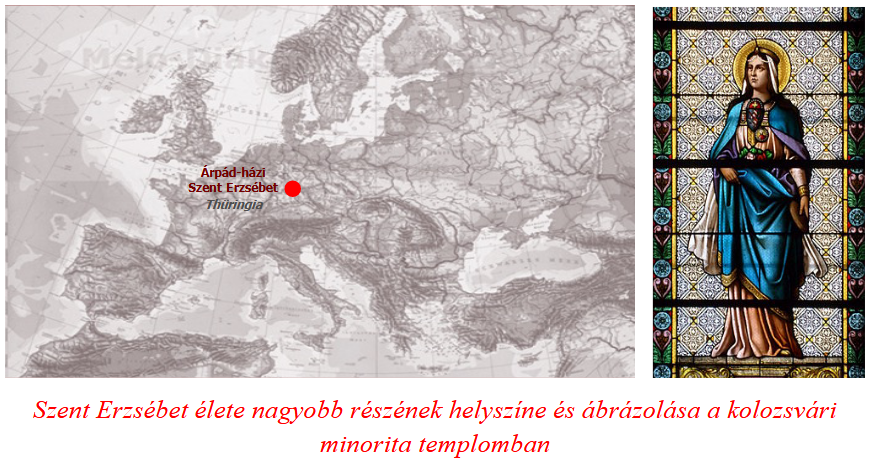
We Hungarians are proud to say, we can say, that after the Virgin Mary, she is the second best-known and most popular female
saint in the Catholic world. He served this with his whole life, his donations, his simplicity and, let's add, his sufferings.
The date of his birth is almost certain to be 1207, but the place of birth is a matter of dispute.
(We should add that, in the case of highly significant personalities , it often happens that several cities and towns fight to prove that their native is the controversial person.) In the case of Erzsébet, Sárospatak, Óbuda and Bratislava are competing to have the world-famous saint as their native. let them say.
In Sárospatak, next to the Castle Church, there is the house that is the most accepted - based on the research results - to consider St. Elizabeth's birthplace.
At the eastern wall of the Roman Catholic church of the Castle Church - which also acquired the status of a basilica - is a cabinet containing the relics of Saint Elizabeth. The reliquary hides a piece of the saint's skull bone and brocade-silk clothing. This can only be seen once a year, on the second day of Pentecost, on the anniversary of Elizabeth's canonization.

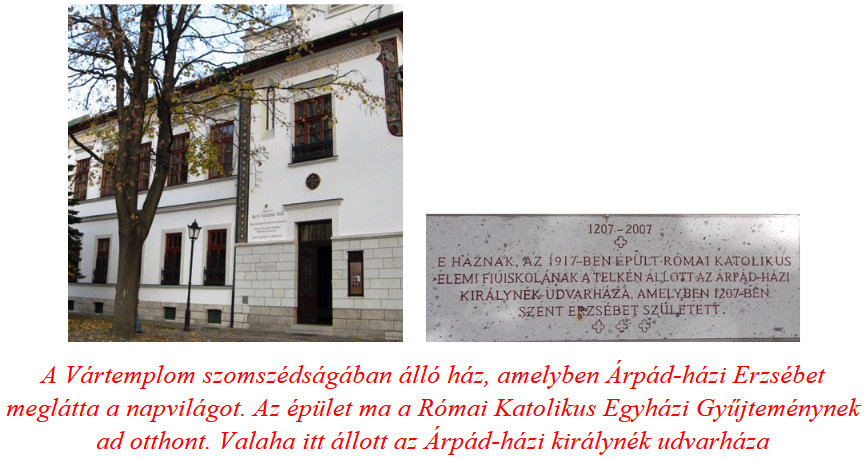
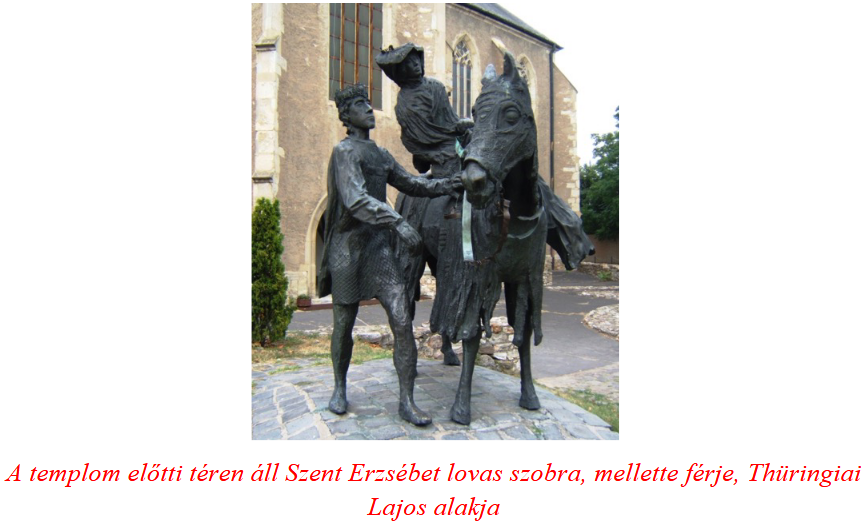 Bratislava also claims to be the place of Elizabeth's birth, and the statue in the Castle Garden seems to confirm this.
Bratislava also claims to be the place of Elizabeth's birth, and the statue in the Castle Garden seems to confirm this.
The only beauty flaw of the Slovak creation is that none of the information boards mentions the affiliation of St. Elizabeth, either in a foreign language or in Hungarian. Thus, based on this, the unsuspecting foreign visitor will never know that Saint Elizabeth was a Hungarian princess.
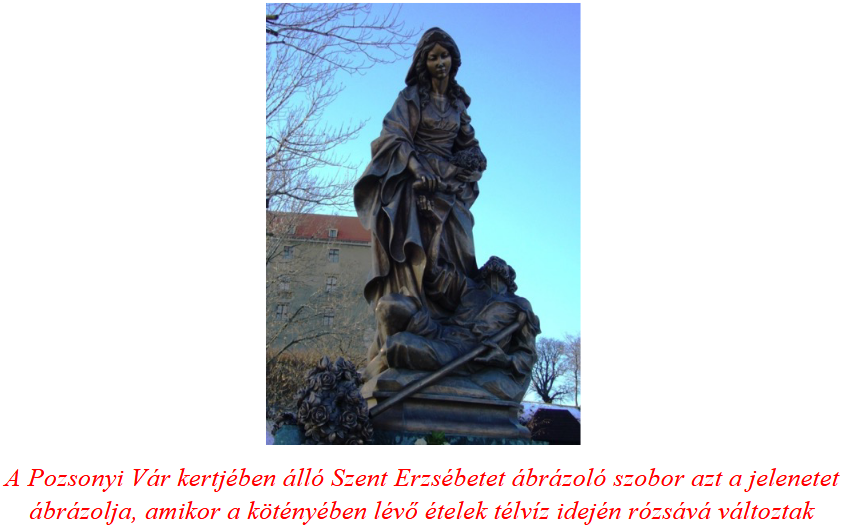
Elizabeth in 1207, II. She was born as the daughter of King András and Gertrud of Meránia Béla should be singled out , who later, after the Mongol tour, earned the rightful title of the "second founder of the homeland". The family promised the child to Count Hermann of Thuringia from Moravia , who was also still a child at the time. At the age of four, Erzsébet was moved to Thuringia to get to know the life there, the language, the customs. The good-natured, gentle child experienced many negative experiences and humiliations in Wartburg Castle.
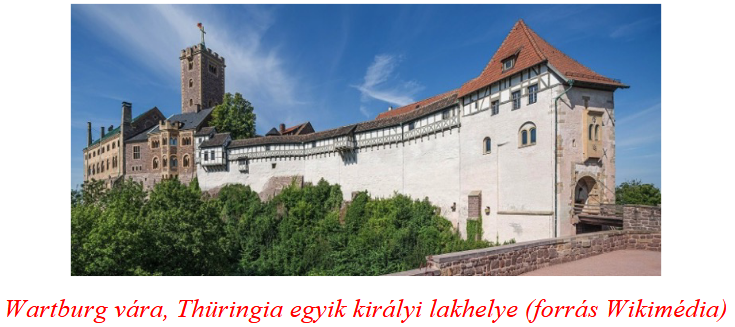
However, before the marriage was concluded, a tragedy occurred, because in 1216 Hermann, the betrothed of Erzsébet of Árpád-házi, died.
Therefore, the parents decided to marry Elizabeth Hermann's younger brother, Louis of Thuringia The marriage took place in 1221. Even then, Elizabeth showed many signs that she tied her life more to God than to her husband. Lajos tolerated this relatively well, he was a gentle and good-natured person. Their reconciliation was a marriage of love, Lajos stood by his wife in everything. Erzsébet gave birth to a son and two daughters.
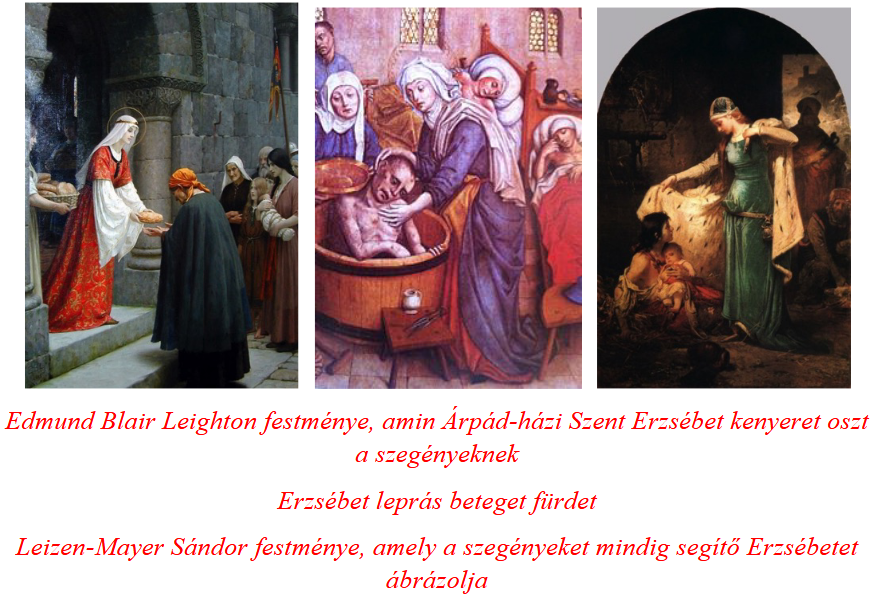 However, in 1227 Lajos also died. He took part in the Fifth Crusade, where he fell victim to an epidemic. Erzsébet was reportedly dead for two days after hearing the tragic news because she loved her husband so much. Elizabeth could no longer stay in the castle, where she was left alone with her small children. He was subjected to more and more attacks and insults, and he was extorted from most of his wealth. Elizabeth retired to Eisenbach, where a Franciscan monk became her spiritual guide. He renounced worldly life, founded a shelter for the poor from his remaining wealth, and he himself took care of the sick and those living in poverty. He took his children with him, but no one dared to take them in, so they lived in great poverty.
However, in 1227 Lajos also died. He took part in the Fifth Crusade, where he fell victim to an epidemic. Erzsébet was reportedly dead for two days after hearing the tragic news because she loved her husband so much. Elizabeth could no longer stay in the castle, where she was left alone with her small children. He was subjected to more and more attacks and insults, and he was extorted from most of his wealth. Elizabeth retired to Eisenbach, where a Franciscan monk became her spiritual guide. He renounced worldly life, founded a shelter for the poor from his remaining wealth, and he himself took care of the sick and those living in poverty. He took his children with him, but no one dared to take them in, so they lived in great poverty.
Most of the time, Elizabeth is depicted with roses in her apron.
According to legend, she continued to care for the poor after her husband's death. On one occasion , he was on his way to the gate, carrying food in his apron, when he met his brother-in-law, Henrik, in the yard.
He asked her what she was carrying in her apron, and she answered that roses. Opening her apron, there were indeed fragrant roses in it. The message of the miracle is that God did not want Elizabeth to be caught in a lie.

The Pope appointed
Master Konrád This lifestyle ruined her health, and 24-year-old Erzsébet died on November 19, 1231. This day is still Elizabeth's feast day. In the Franciscan church, miracles already happened at his funeral. Elizabeth's popularity grew so quickly that IX. Pope Gregory canonized him on Pentecost 1235. Symbolic objects with which it is depicted: roses, bread, fruit, jug, bread bowl. His reverence has spread to many parts of the world, from Europe to South America.
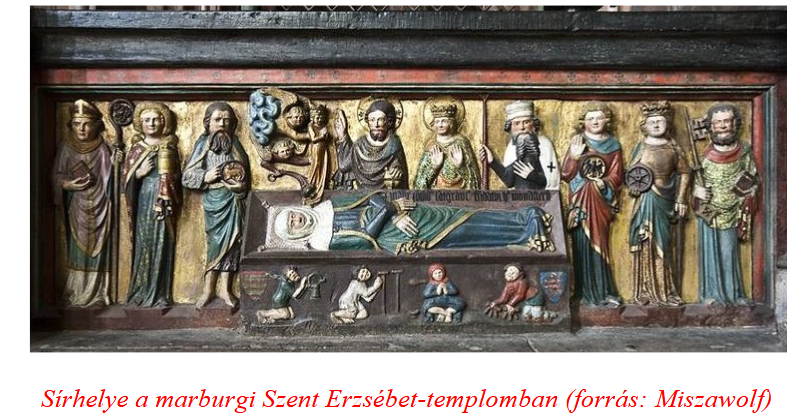
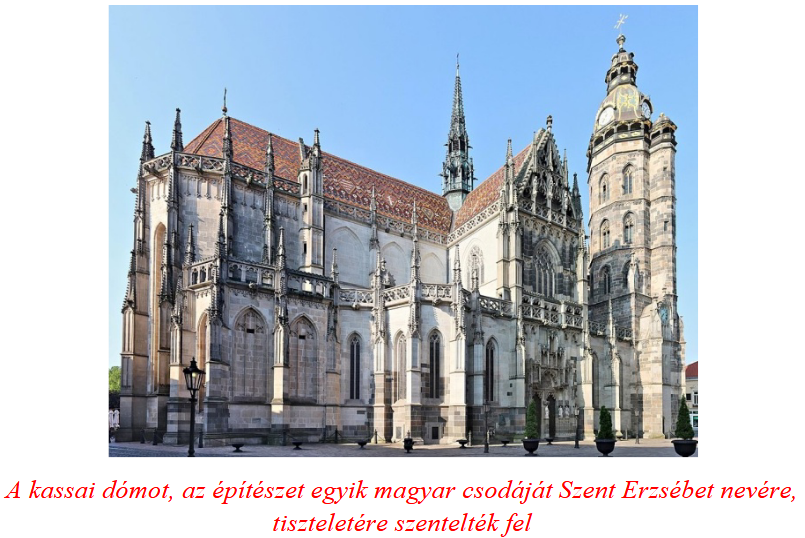
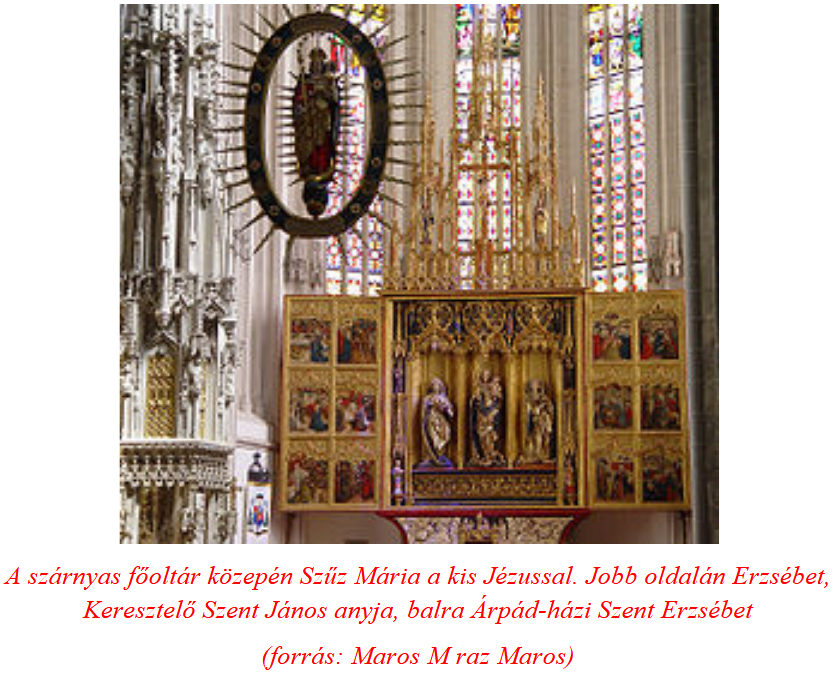
St. Elizabeth's Cathedral in Kassa is one of the most beautiful creations in the Carpathian Basin, which was built in honor of the world-famous Hungarian saint. The first Romanesque House of God was still a parish church, which burned down in 1378. Construction of the new, large-area church began almost immediately, and the Gothic main building was presumably completed by the middle of the 15th century.
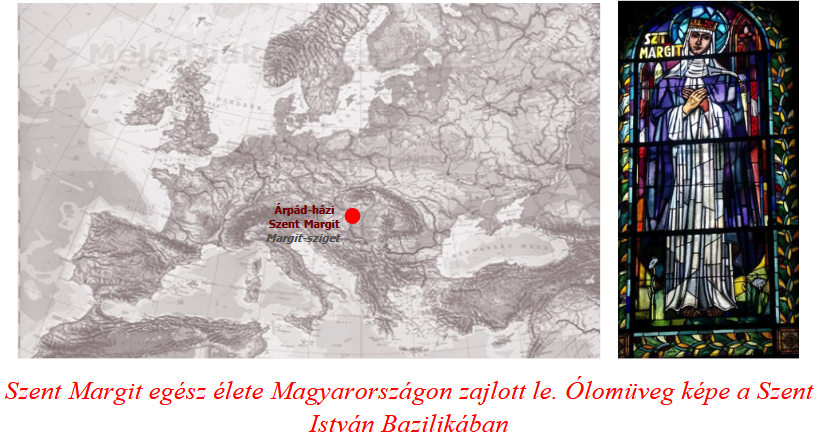 The other princess of the Árpád House, who is the most well-known and most respected person next to Elizabeth, is St. Margaret. Margit's father is IV. King Béla, who is rightly called the "second founder of the country", and whose half-sister was Erzsébet. His mother was Mária Laszkarisz , a princess from Byzantium, a member of the imperial family of the great eastern empire. Forced to flee the Mongol invasion of Hungary in 1241, the royal family found refuge in the castle on the island of Trau on the Dalmatian coast, which provides security, and in the nearby Klissza fortress, protected by mountains.
The other princess of the Árpád House, who is the most well-known and most respected person next to Elizabeth, is St. Margaret. Margit's father is IV. King Béla, who is rightly called the "second founder of the country", and whose half-sister was Erzsébet. His mother was Mária Laszkarisz , a princess from Byzantium, a member of the imperial family of the great eastern empire. Forced to flee the Mongol invasion of Hungary in 1241, the royal family found refuge in the castle on the island of Trau on the Dalmatian coast, which provides security, and in the nearby Klissza fortress, protected by mountains.
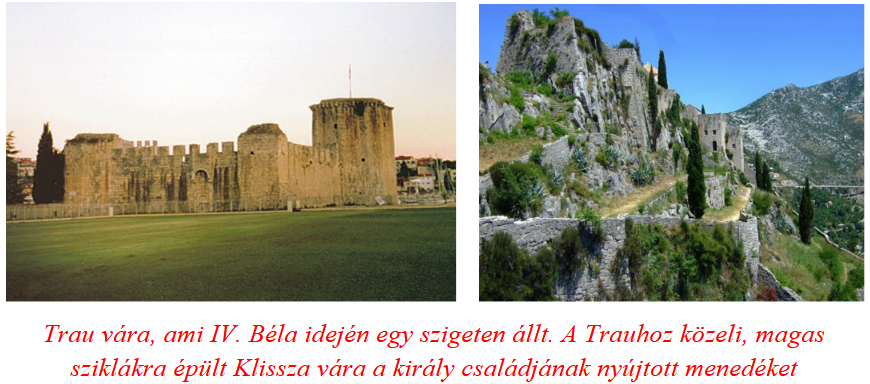 There was a lot of confusion and despair in the royal court because of the terrible state of the country.
There was a lot of confusion and despair in the royal court because of the terrible state of the country.
That is why King Béla and his wife, trusting in God's help, offered their daughter, born in 1242, to God to save the country.
The child born in Klissza Castle was surrounded by the knowledge that the departure of the Mongols and the recovery of the country were partly due to Margit Árpád-házi. His upbringing was also in this spirit. His parents entrusted the little child to the care of the nuns. This is how Margit ended up in Veszprém, in the St. Katalin nunnery.
In addition to Bolgod Ilona, 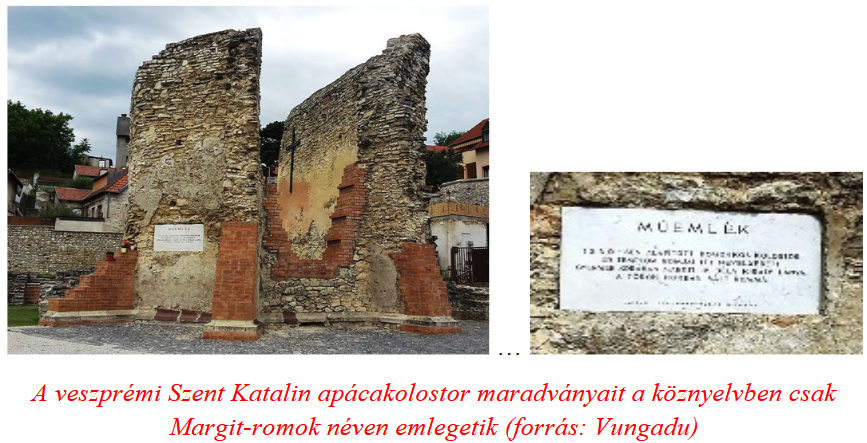 the little child's tutor was Sister Olimpyades She was also the nanny of the little girl, who was her mother instead of her mother. It was here and then that penance, renouncing the callings of life became a part of the life of the Árpád princess. The legend writers noted that among the little girls brought up in the monastery - because at that time many noble families entrusted their children to the care of nuns - while the others behaved loudly and undisciplined, Margit walked quietly and alone, and was only concerned with the living creatures of nature.
the little child's tutor was Sister Olimpyades She was also the nanny of the little girl, who was her mother instead of her mother. It was here and then that penance, renouncing the callings of life became a part of the life of the Árpád princess. The legend writers noted that among the little girls brought up in the monastery - because at that time many noble families entrusted their children to the care of nuns - while the others behaved loudly and undisciplined, Margit walked quietly and alone, and was only concerned with the living creatures of nature.
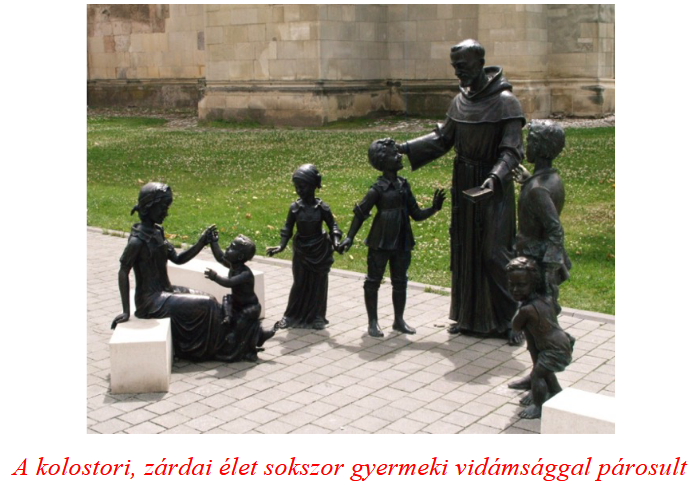 Margit spent six years in the monastery of the Dominican nuns, lived in Veszprém from 1246 to 1252, and only then moved to the island near Buda.
Margit spent six years in the monastery of the Dominican nuns, lived in Veszprém from 1246 to 1252, and only then moved to the island near Buda.
Her father, King Béla, had a monastery built here for Margit.
The royal houses of Europe held the Hungarian princess in high esteem, and over the years the ruler of the Czech and Polish royal houses also asked for Margit's hand in marriage. Twice he had the opportunity for the Pope to release him from his vow, but he did not do it, in fact he flatly refused.
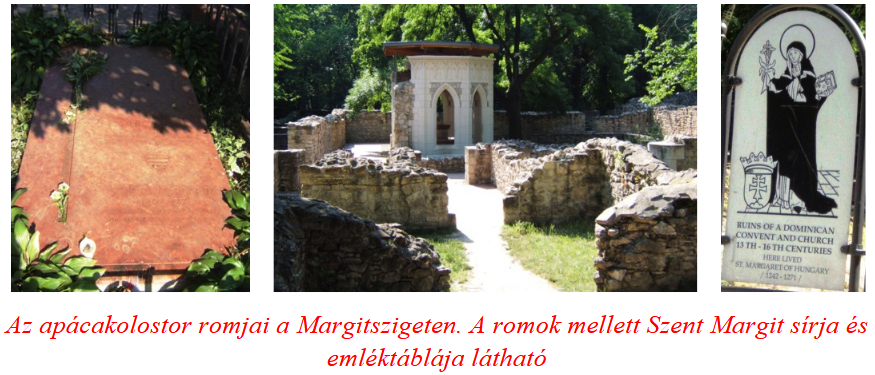
The island was called the Island of Rabbits, a name based on a mistake. ( Ottó Trogmayer showed that lepers were cured on this island, which was closed off from the cities, i.e. it was the island of lepers. In Latin, its name is thus "insula leprorum", which was written by a copying monk, and instead of leprorum, the copy appeared as "insula leporum", omitted a letter "r". The latter stands for the Island of Rabbits. Instead of the name of the leper island with a bad memory, the island of Nyulak remained. There were never any rabbits in the popular place known today as Margitsziget. But the healing climate of the island and the encircling Danube already in the 13th century, its stream provided excellent protection for, for example, a monastery to be built there, hiding it from prying eyes.
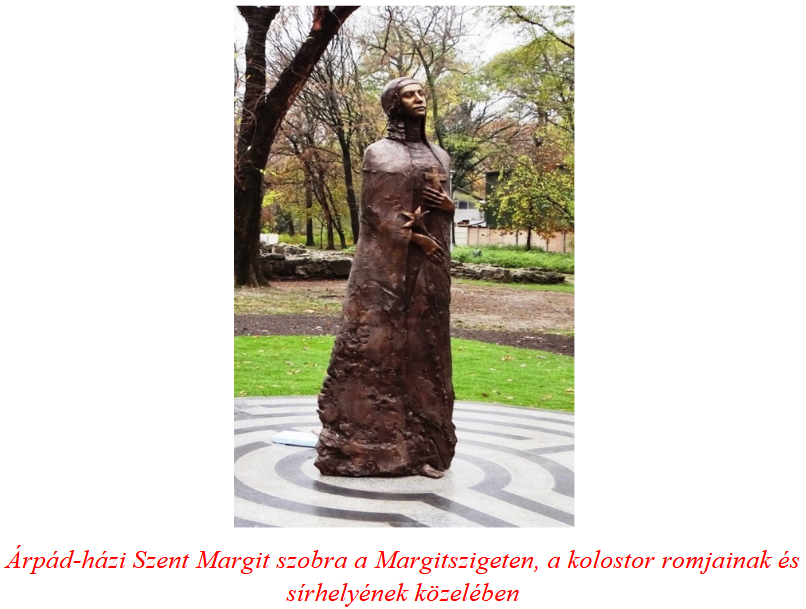
Margaret took her vows here, on the island of Nyulak, in 1254. With this oath, the 12-year-old girl committed her life to the service of God. Margit fully complied with the strict rules, which included severe self-torture. She was insulted and hurt when they treated her like a princess, she couldn't stand it when they wanted to treat her exceptionally.
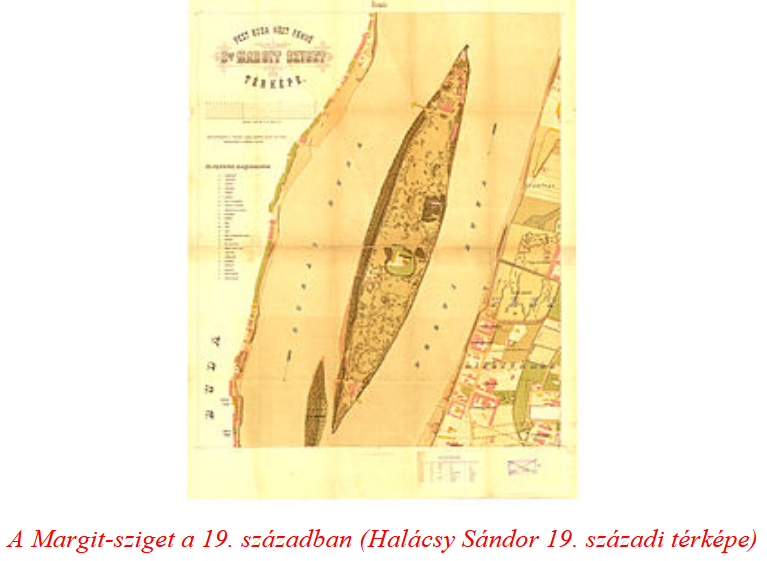
According to legend, God gifted Margit with the ability to foresee the future.
With this, he often helped his mother, Mária Laszkarisz, in solving her national problems. It is common in the days before the death of the saints that they can tell the exact hour of their death. This was also the case with Margit from Scotland, Elizabeth, and Margit from Árpád-háza. Margit passed away on January 18, 1270, whose feast day is associated with this day, January 18. His consecration began as early as 1276, but neither then nor in the following centuries were they able to reach the end. In 1943, Margit was finally appointed XII. He was canonized by Pope Pius.
Saint Agnes of Árpád (Prague) (1205-1282)
Ágnes 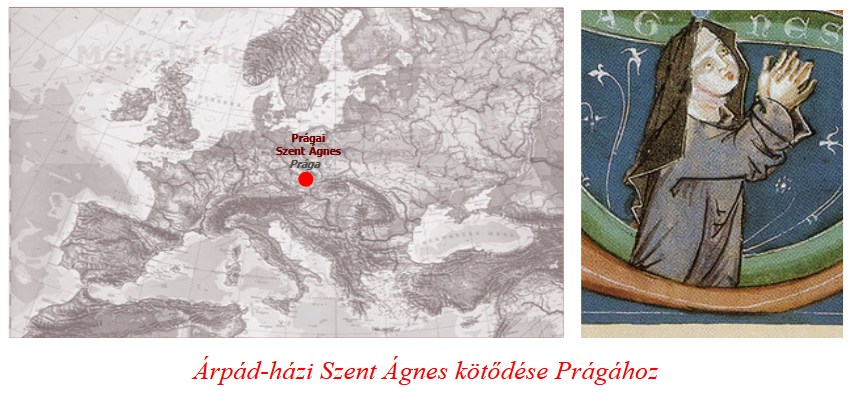 was born in Prague (Premysl) in the Czech Republic in 1205. Her father was King Ottokar I of Bohemia , her mother was King Ottokar III. Béla's daughter, Konstancia of Hungary . Ágnes' life began with a disappointment, a tragedy, and it left its mark on her whole life. It happened that Ágnes' first fiancé, Prince Henrik , died in a hunting accident when he was young. Ágnes was thus returned to Prague, where the Premontre sisters raised her in convent conditions. Ottokár tried several times to find a new husband for his daughter, but he was unsuccessful, even he could not convince his daughter. Ágnes still II. Emperor Frederick's son. Similarly, III. King Henry of England . When Ottokár also passed away in 1230, Ágnes chose the celestials as her betrothed. He canceled the marriage proposals, broke up with the princely life. She chose a similar fate as Elizabeth and Margit later did.
was born in Prague (Premysl) in the Czech Republic in 1205. Her father was King Ottokar I of Bohemia , her mother was King Ottokar III. Béla's daughter, Konstancia of Hungary . Ágnes' life began with a disappointment, a tragedy, and it left its mark on her whole life. It happened that Ágnes' first fiancé, Prince Henrik , died in a hunting accident when he was young. Ágnes was thus returned to Prague, where the Premontre sisters raised her in convent conditions. Ottokár tried several times to find a new husband for his daughter, but he was unsuccessful, even he could not convince his daughter. Ágnes still II. Emperor Frederick's son. Similarly, III. King Henry of England . When Ottokár also passed away in 1230, Ágnes chose the celestials as her betrothed. He canceled the marriage proposals, broke up with the princely life. She chose a similar fate as Elizabeth and Margit later did.
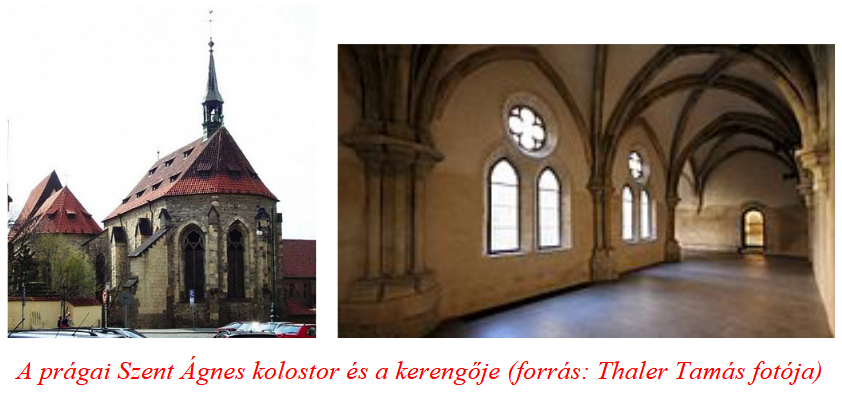
Ágnes moved to the poor quarter of Prague, where, in the spirit of St. Francis's life, together with some of his companions, he devoted every minute of his life to helping and caring for the poor
. He had a correspondence with St. Clare , who worked alongside
St. Francis Klára later sent five sisters from Assisi to Prague to help Ágnes in her work. Ágnes had a significant impact on the young daughters of the Czech noble society with her charity and healing actions. His popularity grew and many people followed his example. spread primarily in the Czech Republic and II. He was canonized by Pope John Paul II in November 1989. The feast of Saint Agnes is celebrated on June 8.
Ágnes died in 1282, at the age of 71, in Prague, where her final resting place is also located.
Saint Kinga of Árpád-házi (1224-1292)
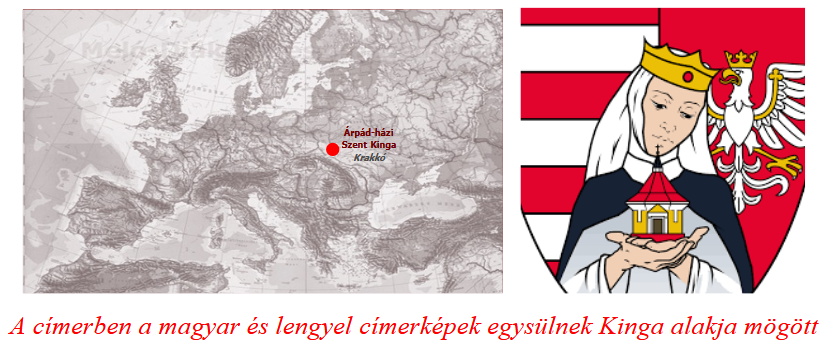
Kinga took a vow of virginity at a young age, and before that, she committed herself to God from childhood. The 15-year-old Kinga went from Esztergom to Kraków with a bright entourage, where Prince Boleslav married her. However, marriage did not change his vow either.
Kinga was born in 1224 in Esztergom, who was IV. He was the first-born child of King Béla and Mária Laszkarisz. Of the couple's ten children, in addition to Kinga, Margit also became a saint, and Jolán's sister is happy. Kinga, also known as Kunigunda , earned the title of patron saint of Poland and Lithuania.
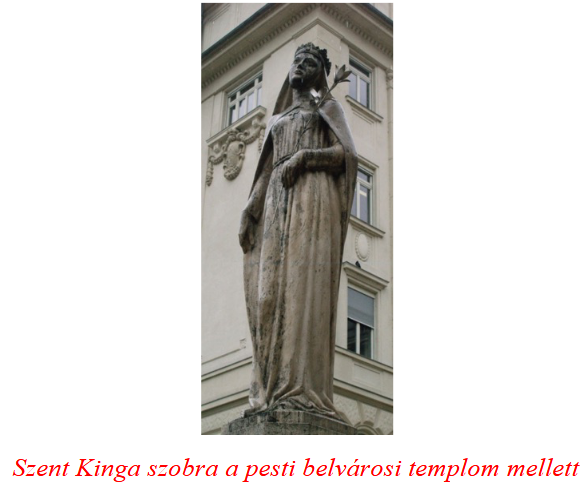
At the age of 15, Kinga became the wife of Prince Bolesław of Kraków, who was elected king.
Thus, Kinga of Árpád-házi became Polish queen in 1239. The royal couple took a perpetual vow of chastity. In the centuries of the Middle Ages, this was called a "Josephian marriage". (Referring to the relationship between St. Joseph and the Virgin Mary.) Kinga used his own dowry to defend against the Mongol invasion for the benefit of his other country, Poland.
Kinga visited Hungary in 1249, where he met his father, IV. With King Béla . According to the well-known legend, they visited the salt mines in Maramaros, where the girl asked her father to give her a block of salt for the Poles. King Béla presented his daughter with a salt mine, into which she threw her ring as a sign of ownership. This salt mine in Máramaros is still called the Kinga mine.

When the salt mine was opened in Wieliczka near Krakow two years later, the ring that was thrown into the Máramaros mine was found in one of the mines.
This story also refers to the belonging of the two peoples, their many ties.
Kinga founded many monasteries and churches in Poland, and took care of their equipment and operation.
One of the most important such places is Ósandec. became one of the cultural and ecclesiastical centers of Central Europe After the death of her husband, Boleslav, Kinga became a Poor Clare nun. ( Klára of Assisi .) He distributed his wealth among the poor and retired to the monastery in Old Sandec. He lived the remaining years of his life here.
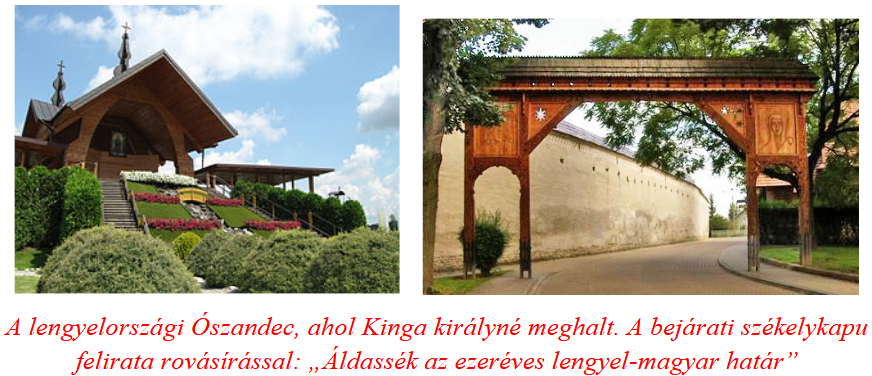
Kinga died peacefully in 1292. He was beatified in 1690, then II. by Pope John Paul II in 1999.
His feast day is celebrated on July 24 in the Roman Catholic Church.
Saint Elizabeth of Portugal (1277-1336)

Elizabeth, who was born in Zaragoza, lived in Portugal, and was canonized there, can rightfully be included in the ranks of the Árpád house saints. Among his ancestors we can find II. King András , who was the great-grandfather of St. Elizabeth of Catalonia.
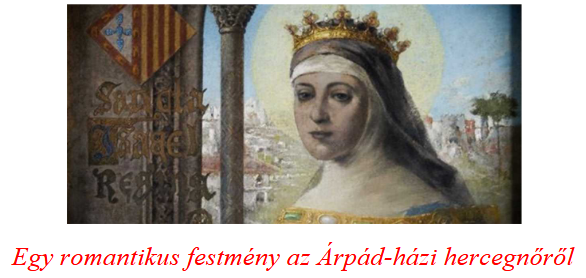
Saint Elizabeth of Portugal was the niece of Saint Elizabeth of Árpád-háza, and was named in honor of her aunt. Born in Catalonia in 1277, the girl was named Elizabeth in Catalan, but Izabella in Spanish and Portuguese. Elizabeth III. of King Peter of Aragon .
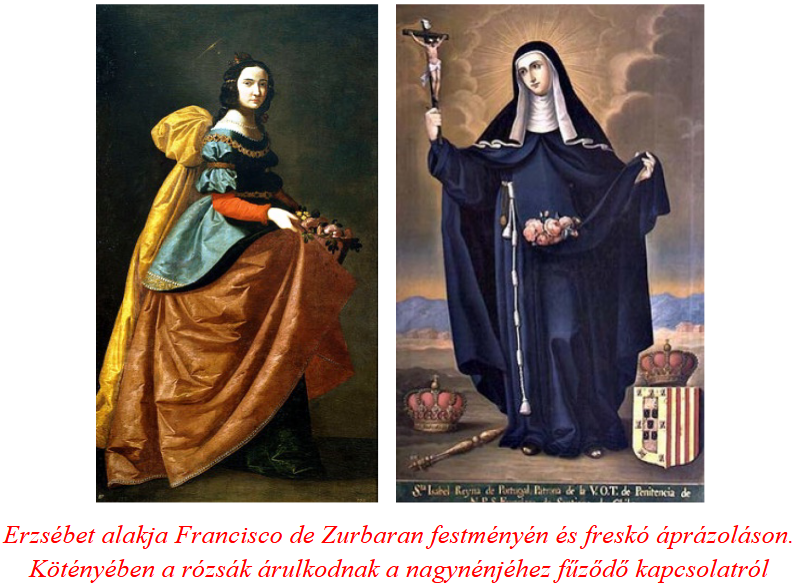
King Peter of Aragon gave his daughter in marriage
to Dénes the heir to the Portuguese throne However, her husband did not adhere to conjugal fidelity, his frequent debaucheries disrupted family life.
Erzsébet humbly tolerated this and even cared for and raised Dénes' illegitimate children. In the king's wickedness, he finally banished Elizabeth to a distant village, but his saintly wife tolerated this as well. When Dénes became terminally ill, he sent his wife to him, who nursed and cured his sick husband. On his deathbed, King Dénes repented of his sins and turned to heaven.
After the funeral, the dowager queen distributed her wealth, supporting monasteries, the poor, and orphans.
And he entered the Franciscan order, continuing his charity work. Erzsébet did not take care of herself even when she was terminally ill, but supported and helped those in need.
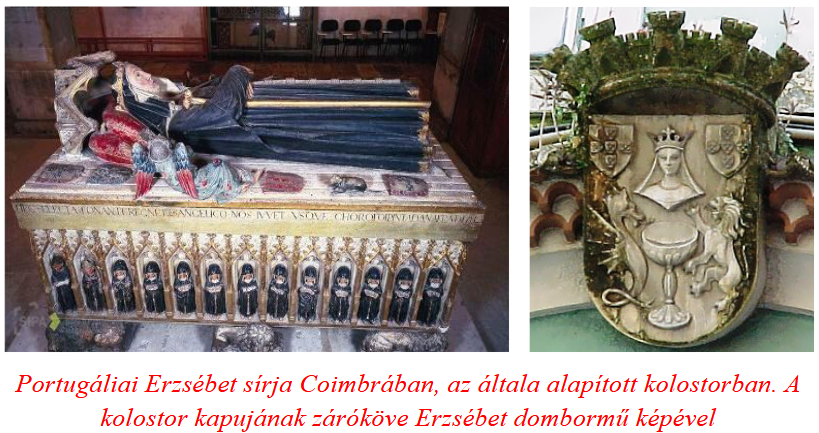
Elizabeth died in 1336, at the age of 59. Miracles happened at his grave, and from then on people flocked there wanting to be healed. VIII. He was canonized by Pope Orbán in 1626. The feast of Elizabeth of Portugal is celebrated by Roman Catholics every year on July 4.
In the last thousand years, we can list about a hundred saints and blessed ones among the actors of the Hungarian church and public life. Including those who are currently being prosecuted. Knowing this, it is deceitful for anyone to say about Hungary, the Hungarian people, that it does not belong to Europe, that our language and culture "stands out" from the ranks of the European peoples.
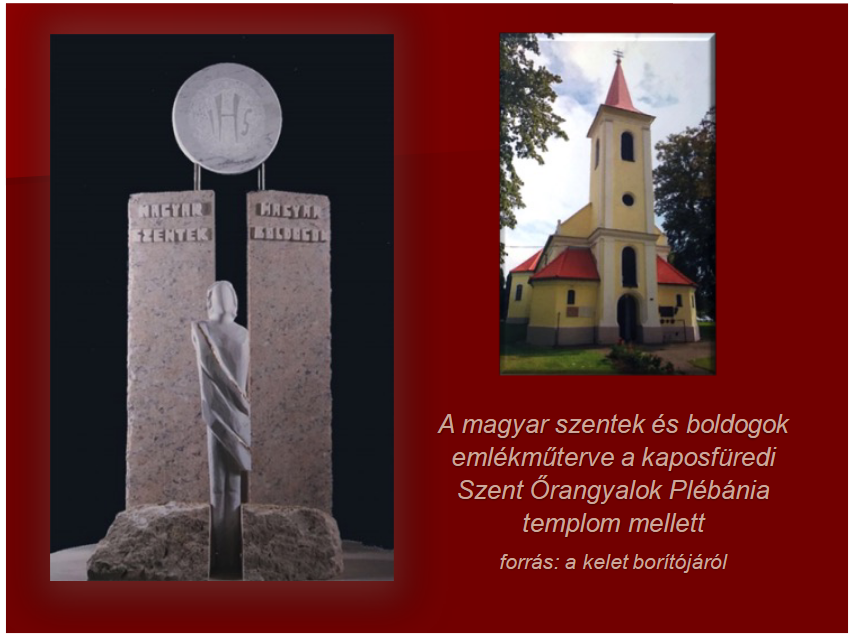
In addition to the saints, we know twelve blessed ones from the Árpád house, six of them women.
Blessed Gizella
of Árpád-házi Blessed Jolán
Magyar Blessed Ilona
Blessed Gertrud
of Árpád-házi Blessed Erzsébet widow of
Árpád-házi Blessed Erzsébet szúz
We Hungarians celebrate the Memorial Day of Hungarian Saints and Blesseds on November 13.
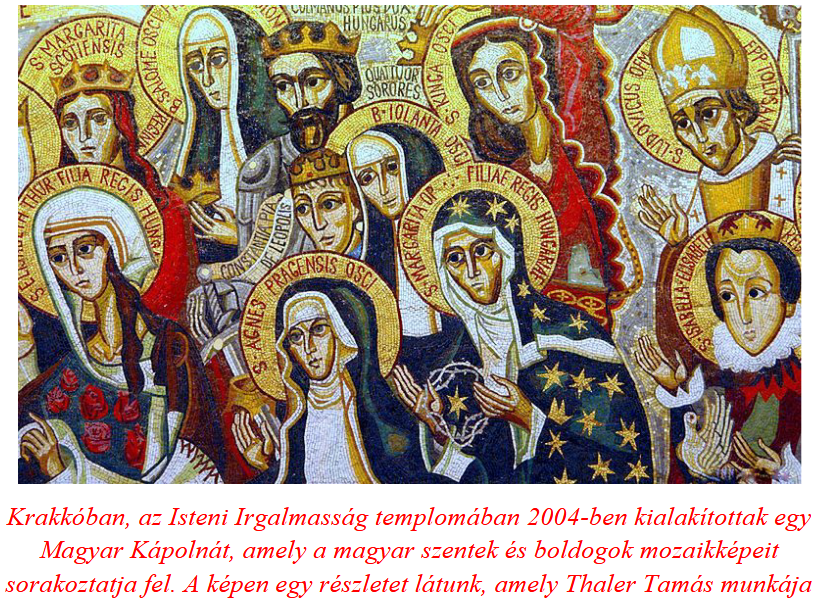
Author: Ferenc Bánhegyi
The parts of the series published so far can be read here: 1., 2., 3., 4., 5., 6., 7., 8., 9., 10., 11., 12., 13., 14., 15., 16., 17., 18., 19., 20.. 21.

